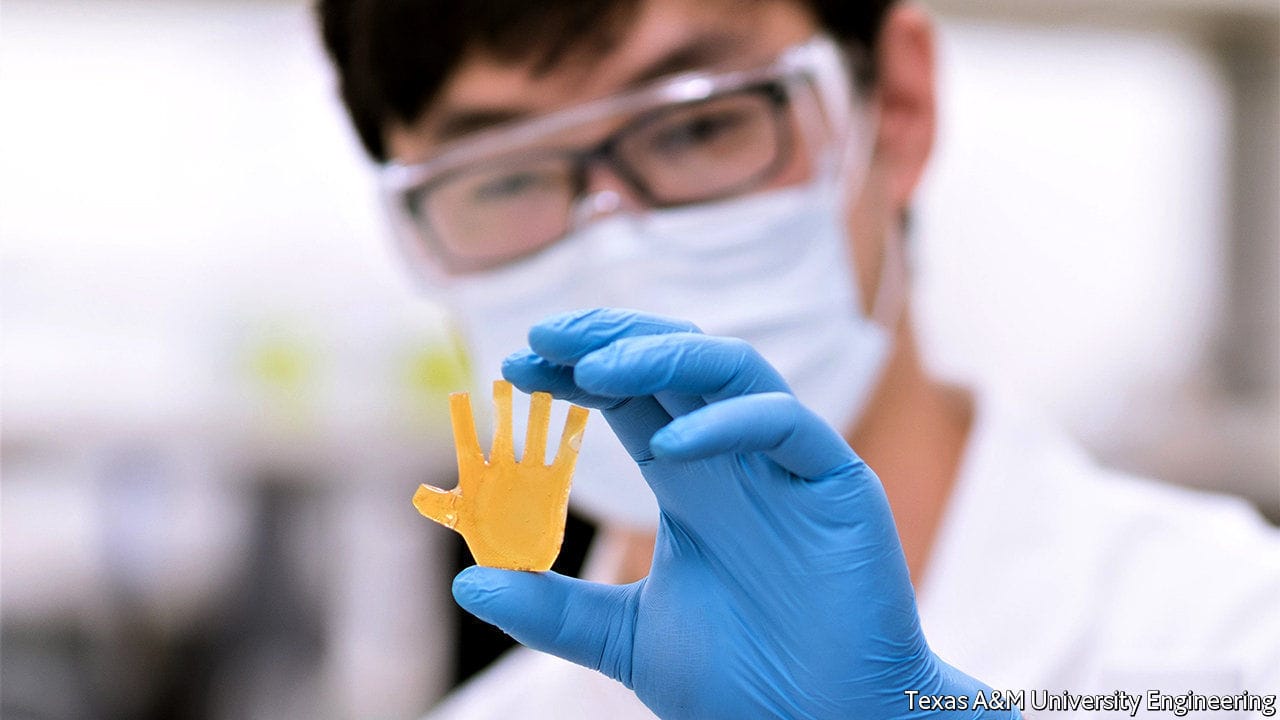- by
- 07 24, 2024
-

-
-
Loading

Loading

MATERIALS SCIENTISTSDAM have long sought to emulate biology’s trick of joining materials that have wildly different properties into seamless functional units with no weak points, in the way that bones, connective tissue and skin are joined into limbs. Conventional manufacturing techniques, in which components of different composition are first created, and only then fitted together, make such emulation hard. However, three-dimensional (3) printing, which permits materials to be blended as they are applied to a growing structure, offers a way to do this in principle. And a group of researchers at America’s Army Research Laboratory and Texas & University, in College Station, now think they have turned principle into practice.The materials they are interested in are called interbonding polymer networks, and those they have lighted on in particular share the same underlying chemistry. A simple polymer is a molecular chain, the links of which are called monomers. Interbonding polymer networks involve a second set of monomers that form chemical links with the first. Crucially, these second monomers are symmetrical molecules, so both ends can make such links. This means they can bind polymer chains together by forming cross-links at numerous places between chains, to create a structure resembling a net. The physical properties of this net will depend on the density of cross-links. And that density is under the control of the chemists doing the mixing.